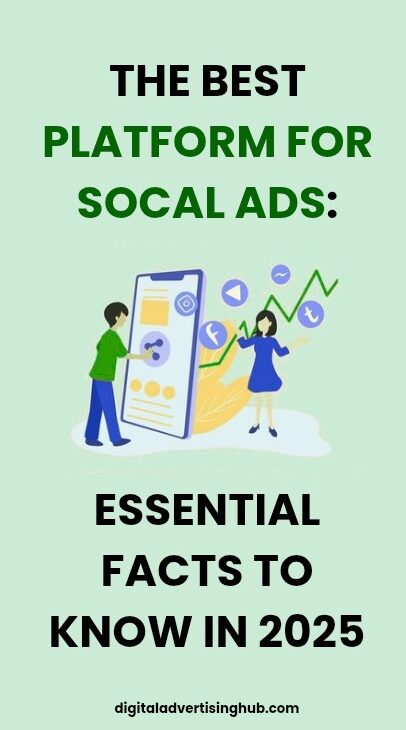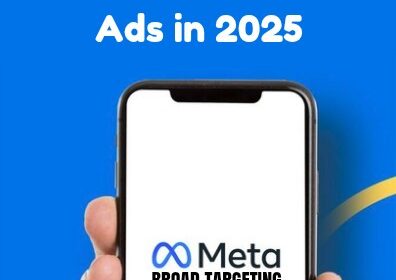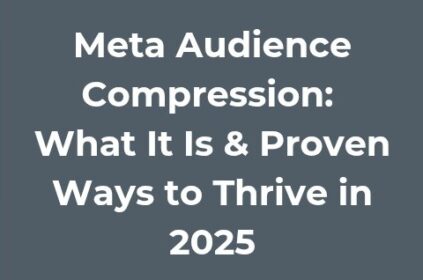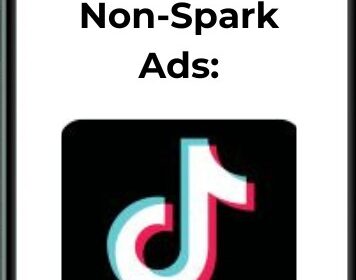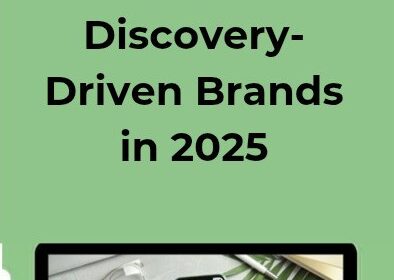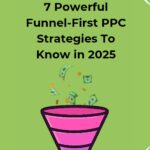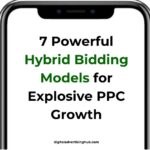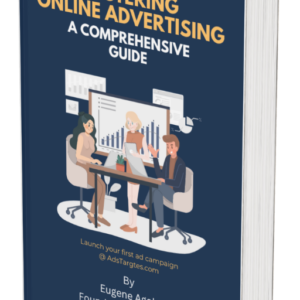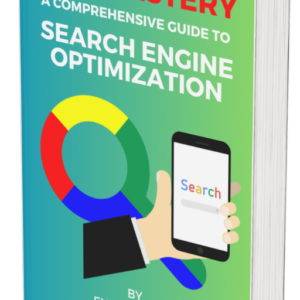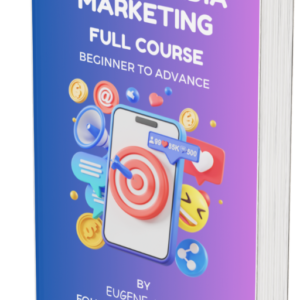Ever feel like you’re throwing money into the void every time you run an ad on social media?
You’re not alone.
Between Meta’s endless targeting options, Snapchat’s Gen Z playground, and Pinterest’s visual goldmine, brands today are spoiled for choice—and paralyzed by it at the same time.
Everyone’s chasing reach, engagement, and conversions, but few actually stop to ask the real question: Which platform is worth betting on?
The truth is, not all social platforms are built for your kind of audience—or your kind of goals. Some are incredible for storytelling. Others for impulse purchases.
And some quietly outperform in long-term brand trust. The trick isn’t to be everywhere; it’s to know where your ads will actually work.
That’s what we’re breaking down today: the data-backed, brand-tested secrets behind finding the best platform for social ads—and how to turn that choice into measurable growth for your brand.
Why The Debate For The Best Platform For Social Ads Matters

Choosing the best platform for social ads is critical because every ad dollar must stretch farther in a competitive landscape.
In 2025, total ad spend across social media is expected to reach $276.7 billion globally. As usage across platforms saturates, efficiency, audience fit, and creative relevance become the margin makers.
Even small shifts in cost-per-click (CPC) or conversion rate can tilt profitability. Some platforms are better suited to awareness, others to direct response, and others to niche or creative-first use cases.
The “winner” may differ depending on whether your campaign focuses on brand lift, online sales, lead generation, catalog sales, or app installs.
Marketers also face rising CPM inflation, especially on youth-centric platforms.
For instance, Snapchat’s CPM climbed 47% year-over-year, more than any other platform measured in 2024.
Pinterest, by contrast, saw a 16% CPM increase in the same span. Such divergence means that the best platform for social ads for one brand may overrun ROI for another.
There’s also creative alignment to consider.
Some platforms reward discovery-based visuals or aspirational formats (Pinterest), others favor short video or interactive ads (Snapchat), while Meta maintains broad flexibility across formats and funnel stages.
The “best platform for social ads” in your mix needs to align with where your audience lives, how they behave, and how well your creative can adapt.
Over time, as ad ecosystems evolve, levers like first-party data, machine learning, and measurement nuance will matter more than sheer reach.
That’s why positioning your brand on the “best platform for social ads” isn’t a one-time decision — it’s a strategic discipline of testing, learning, and optimization.
#1. Meta: For Broad Reach
Meta (Facebook + Instagram) remains a default contender when evaluating the best platform for social ads. Its advantage lies in reach, maturity, platform features, and ecosystem integrations.
Reach, Audience Scale, and Advertiser Ecosystem
Meta’s footprint remains vast. Facebook has 3.07 billion monthly active users, making it the largest social platform in terms of scale.
Instagram adds another 2 billion monthly users. That scale gives Meta deep audience segmentation, layering first-party data, lookalikes, retained audiences, and integrated analytics.
Over 10 million advertisers now use Meta’s platforms.
Meta’s system also supports a full-funnel advertising strategy: upper-funnel awareness, mid-funnel engagement, retargeting, and direct-response.
The platform’s ad manager offers flexibility across formats: feed, Stories, Reels, in-stream video, carousels, collections, and more.
For many brands, that flexibility makes Meta a strong baseline when considering the best platform for social ads.
Performance, Costs, and ROI
Meta has long offered cost efficiencies at scale, particularly on mid-to-lower funnel conversions. Its optimization and bidding engines are mature.
Yet, costs have edged upward in 2025. Gupta’s CPM tracker shows Meta’s CPM growth in 2024 climbed about 5%, following more modest growth earlier in prior years.
That said, the increment is lower than in youth-first platforms like Snapchat.
Meta’s ad reach increased by 4.3% in a recent annual cycle, adding ~93 million potential reach globally. That suggests that, despite competition, Meta retains headroom for scaling.
For many advertisers, Meta offers a dependable ROAS baseline, especially when your product or service falls within broad appeal segments.
If your audience is more niche or younger, Meta may still serve as the anchor platform while you experiment on alternatives.
Best Use Cases and Creative Strategies
Meta tends to perform well when you have a layered strategy.
Start with awareness on Reels or Stories, then retarget engagement or website visitors with dynamic product ads or catalog-based ads.
Building creative templates that adapt across formats helps.
Because Meta’s system reacts to conversions and engagement signals, gathering conversion data early is key.
Use Meta’s Advantage+ or automated tools where feasible to let the algorithm optimize toward best outcomes. Also leverage in-platform A/B tests and dynamic creative tools.
Many brands use Meta as the backbone of their paid social investment and layer Snapchat or Pinterest for incremental reach, creative differentiation, or demographic targeting.
In this hybrid approach, Meta remains the anchor while niche platforms add pockets of efficiency.
When assessing alternatives to Meta, always consider whether your creative assets, audience, and funnel logic can migrate across platforms.
That way, your test budget is more productive. Among the contenders for best platform for social ads, Meta still holds merit as the baseline benchmark.
#2. Snapchat: For Youth, Immersion, and High Engagement
Snapchat’s core advantage when considering the best platform for social ads is its strength with younger users, immersive formats, and high potential for creative impact.
Audience, Platform Behavior, and Creative Formats
Snapchat is concentrated among younger demographics — Gen Z in particular.
While its scale is smaller compared to Meta, Snapchat’s positioning as a camera-first, interactive, and ephemeral environment gives it a unique appeal for brands targeting youth.
It currently reaches an estimated 900 million monthly active users.
Snapchat’s ad formats lean into interactivity: augmented reality lenses, sponsored geofilters, Snap Ads, and interactive mini-games.
These formats can drive engagement, brand sentiment, and novelty — attributes that matter when targeting younger segments or launching new products.
Cost Dynamics and Rising CPMs
Snapchat’s biggest challenge is escalating ad costs. Its CPM increased by 47% year-over-year, as measured by media trackers.
That level of inflation is alarming if your funnel margins are tight. It forces advertisers to compensate with higher conversion rates or tighter targeting to avoid bleed.
Still, Snapchat’s ability to capture engagement early in the funnel (e.g. for app installs, product launches, and brand awareness) means it often delivers qualitative benefits such as brand lift or buzz — though you’ll need to carefully measure those marginal impacts.
Because of its audience skew, hires in youthful segments often report above-average return per dollar spent compared to generic placements on older-skewing platforms.
But you must accept that Snapchat may never beat Meta in pure scale or lower-funnel efficiency for many brands.
Practical Strategy for Using Snapchat as Part of a Portfolio
If you adopt Snapchat in your mix, use it for novelty, top-of-funnel tests, AR or immersive engagement, and high-impact launches.
Begin with small budgets, aggressive creative testing, and engagement or reach objectives to gather signals.
Use those signals to retarget or retest on lower-funnel platforms.

Because Snapchat CPMs escalate, segment by audience tiers and exclude non-core groups. Use LTV metrics to evaluate which cohorts are genuinely converting.
Don’t let underperforming ad sets run unchecked — pause them early.
Often, Snapchat does best as a complement to Meta or Pinterest. For example, you might launch a new product through Snapchat to generate buzz, then retarget interest across Meta.
In a diversified approach, Snapchat can act as an engine for awareness within younger demographics — but only if you manage cost rigorously.
Among the contenders for best platform for social ads, Snapchat shines when novelty, youth reach, and immersive formats matter more than pure low-cost scale.
#3. Pinterest: For Discovery-Driven Advertising That Converts
Pinterest is sometimes overlooked in the race for the best platform for social ads, but its strengths lie in discovery, intent, and visual inspiration.
For many brands — particularly those in e-commerce, lifestyle, or “inspiration-driven” verticals — Pinterest can become a high-efficiency acquisition channel.
Platform Mindset, User Intent, and Discovery
Pinterest operates more like a visual search engine than a social feed. Users come to browse ideas, plan projects, and find concepts.
That mindset yields a high potential for latent intent — they arrive with motivations like “I want to redecorate,” “I want to find healthy recipes,” or “I want fashion inspiration.”
Because of that, Pinterest’s ads tap into pre-decision behavior. Ads blend with organic content more naturally, often delivering higher engagement and less ad fatigue.
Pinterest reports that its ad conversions can see uplifts: Pinterest ads delivered a 24% conversion uplift when paired with shopping tools.
Pinterest also recently reported 578 million monthly active users. Its revenue growth is strong — Q2 revenue rose 17% year over year — though it recently missed on profit per share.
Still, ad demand remained robust due to AI-powered targeting and linking to shopping.
Efficiency, Format Options, and Cost Profile
Because Pinterest’s competitive intensity is lower than Meta or Snapchat, its CPM inflation is more moderate.
That gives advertisers room to scale creative that resonates visually and strategically. Pinterest’s ad manager supports formats like idea pins (video + images), collection ads, and standard pins, blending with content-driven user experience.
For visually rich products — home goods, fashion, beauty, decor, food — Pinterest often delivers comparably lower CPA or better conversion efficiency.
Many brands find that the marginal cost per conversion on Pinterest is competitive, especially after optimizing creative for discovery and intent.
Pinterest also benefits from lifecycle attribution: because users might save pins and return weeks later, it’s well suited for long-consideration purchases.
You can capture that delayed conversion by extending attribution windows or using click+view windows to credit delayed engagement.
Best Practice Use Cases and Integration
To use Pinterest well, create discovery-forward creative. Think vertical video, inspirational boards, shoppable pins, and lifestyle visuals.
Use broad targeting initially and let Pinterest’s algorithm find engaged audiences. Then layer narrower interest or demographic targeting as performance data emerges.
Sync your product catalogs or shop feeds so your pins can become shoppable. Use Pinterest’s tag tracking to retarget users who viewed or saved a pin.
When practical, apply conversion events in a server-side or API-based manner so you don’t lose measurement in the cookie-less era.
Often Pinterest is strongest as a parallel engine — run alongside Meta or Snapchat to capture attention from users in a discovery mindset. Then retarget interest across platforms.
In some verticals, Pinterest can be the highest-efficiency acquisition channel if creative, targeting, and funnel structure align.
When assessing the contenders for best platform for social ads, Pinterest should not be overlooked — especially when your product or category maps to inspiration, discovery, and visual appeal.
Head-to-Head Comparison: Which Situations Favor Which Platform?
No single platform always wins. The best platform for social ads depends on context. Below are scenarios and signals to guide decision-making.
High Scale + Mid-Lower-Funnel Performance
If your business demands volume, margin, and scalable conversions, Meta often leads. Its volume, broad targeting, and mature optimization systems give it legs across funnel stages.
If you’re selling broadly appealing products, Meta’s scale is hard to beat.
Younger Audience, Creative Differentiation, Brand lift
If your core is Gen Z or youth, Snapchat stands out. Its immersive ad formats and high engagement can give unique brand moments.
Use Snapchat where you believe creative lean can attract attention and willingness to test.
Discovery-Driven Product Categories
If your product encourages inspiration-driven behavior — home decor, gifts, beauty, DIY, fashion — Pinterest may outperform.
Users already in “looking mode” are more receptive to product ideas, often before they explicitly search.
Cost Sensitivity & CPM Inflation
When budgets are tight and competition squeezes margins, Pinterest’s more moderate inflation and lower competition may make it a safer play.
Snapchat’s rapid CPM jumps risk eroding ROI if you’re not careful with optimization.
Creative Assets & Adaptability
If your creative can seamlessly adjust across formats (video, vertical, interactive), you have flexibility.
But if you’re locked to one format (e.g. static images), Pinterest or Meta may better preserve performance. Ensure your creative strategy matches platform norms before scaling.
Funnel Strategy & Measurement Clarity
If your ad attribution infrastructure is still basic, Meta offers an easier out-of-the-box path.
But if you can invest in measurement sophistication (multi-touch, server-side tracking, cross-channel attribution), then the “best platform for social ads” becomes the one where you extract marginal gains — perhaps Pinterest, Snapchat, or Meta, depending on signal quality.
In practice, many marketers adopt a blended approach: Meta forms the core, Snapchat or Pinterest run as test or niche channels, and budgets shift dynamically to where marginal returns exceed cost thresholds.
5 Tactical Tips to Help You Maximize the Best Platform for Social Ads
Whether you’re primed to lean into Meta, Pinterest, Snapchat, or a hybrid, applying consistent disciplined tactics helps push your winning platform further.
#1. Start small, test creative, then scale
Don’t commit big budgets immediately.
Launch small pilots (say 5–10% of your intended spend) on each platform, test creative variations (different angles, messaging, formats), and gather signal.
Once you find winners, allocate scaling budgets. This approach protects ROI and helps validate which is truly the best platform for social ads for your brand.
#2. Use conversion-based bidding and allow learning windows
Let the algorithm optimize for conversions (or purchase events) rather than clicks or impressions.
Give each ad set a minimum time or spend threshold before judging performance — e.g. let at least 30–50 conversions accumulate before making decisions.
Early performance fluctuations may not reflect long-term potential.
#3. Optimize creative for platform norms
Each platform has implicit design “rules.” On Snapchat, immersive AR, gestural interactions, and short video perform best.
On Meta, vertical video, Reels, or carousel dynamic formats are standard. On Pinterest, aspirational imagery, unbranded inspiration-first visuals, and idea pins lead better.
Poorly formatted creatives often choke performance early, regardless of reach.
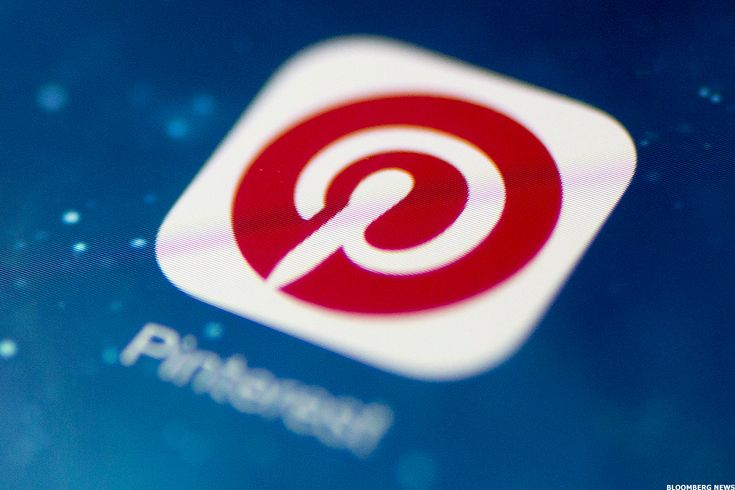
#4. Retarget and layer audiences across platforms
Use each platform’s strength as a feeder into the funnel and retarget across platforms.
For example: use Snapchat to drive interest, retarget users on Meta or Pinterest for conversion.
Or use Pinterest to draw aspirational audiences, then retarget on Meta. This integrated strategy often outperforms single-platform silos.
#5. Measure incrementally, guard against waste
Implement adaptive rules to pause underperforming ads (e.g. when CPA exceeds threshold by 25% over two days).
Use incrementality tests or holdout groups to test true lift. Always compute return on ad spend (ROAS) rather than vanity metrics.
Use wider attribution windows if your sales cycles are longer. In cookie-less environments, deploy first-party tags or server-side tracking to preserve signals.
By applying these tactics consistently, you increase your odds of discovering which is truly the best platform for social ads for your business.
The winner often shifts over time, so ongoing testing matters.
Sample Scenario: Applying These Comparisons in Practice
Imagine a DTC brand selling home décor in Nigeria planning its 2025 ad budget. The team considers Meta, Snapchat, and Pinterest based on country adoption, creative capacity, and cost sensitivity.
First they run pilot campaigns with ₦2 million per platform for one month.
#1. On Meta, they test image carousels, Reels, and video ads to a broad Nigeria + diaspora audience.
#2. On Pinterest, they run shoppable pin ads targeting decor/interior design interests and retarget users who saved pins or viewed items.
#3. On Snapchat, they experiment with AR lenses or Snap Ads in markets with younger urban users.
At month’s end, they examine metrics:
#1. Meta delivered the highest volume and stable ROAS, with predictable CPA across product lines.
#2. Pinterest’s CPC and CPA were modestly higher per conversion but had lower competition and better margins on mid-ticket items.
#3. Snapchat’s reach was strong among younger demographics, and brand lift surveys showed good sentiment, but conversion volume lagged relative to cost.
Given the results, the brand uses Meta as the baseline channel, allocates 10–15% of budget to Pinterest for discovery and catalog sales, and reserves a slim test budget for Snapchat to test new creative or product launches.
Over time, if Snapchat’s CPA drops or volume picks up, that allocation can grow.
This hybrid approach acknowledges that the best platform for social ads shifts by campaign type, customer segment, and creative.
You rarely commit 100% to one channel — you manage trade-offs.
How to Evolve & Reassess Your Platform Mix Over Time
Because all platforms and user behaviors evolve, your determination of the best platform for social ads should be dynamic. Here’s how to keep your mix optimized.
Regular A/B and Platform-Level Tests
Every quarter, reserve a budget to test new segments, geographies, or creative angles across Meta, Snapchat, and Pinterest.
Rotate control groups so you always maintain a benchmark. Use experiments to validate whether an upstart platform can overtake your top performer.
Attribution and Incrementality Measurement
Leverage holdout groups or geographic splits to measure true lift. Don’t assume that every attributed conversion is incremental.
Where possible, incorporate multi-touch attribution or incrementality testing so you know which platform is driving new business vs cannibalizing.
Creative Refresh and Format Adaptation
Platforms reward novelty. Rotate creative formats (video, interactive, AR, slides) frequently — stale creative loses efficiency.
Evaluate creative themes by platform, then scale winners. Your ability to produce adaptable creative is often the lever that separates a “best platform for social ads” outcome.
Budget Reallocation Tied to Marginal ROAS
Track marginal returns: how much extra revenue you get from each additional naira spent. Shift budgets to the platform segments yielding the highest marginal ROI.
If Snapchat shows a sharper marginal profit curve at a medium scale, invest more there until diminishing returns set in.
Monitor Trends and Platform Upgrades
Stay alert to core changes: algorithm updates, new ad formats, privacy rules, measurement changes, and creative innovations.
Platforms regularly introduce new formats (e.g. Meta’s Advantage+ or Pinterest’s new AI shopping features) that can reset competitive advantages.
A platform that lags today may leap ahead tomorrow — remain agile.
By building a culture of experimentation and measurement, your decision about which is the best platform for social ads becomes less about guesswork and more about responsive strategy.
Conclusion
The search for the best platform for social ads in 2025 doesn’t end in a definitive winner — it’s about finding the right balance for your brand’s audience, margins, creative assets, and growth strategy.
Meta maintains unmatched scale and funnel flexibility. Snapchat shines for youth engagement and immersive formats.
Pinterest delivers inspiration-led conversions and lower competitive pressure.
Your highest-performing mix will evolve. Start with disciplined experiments, measure incrementally, and shift budget to where marginal returns justify spend.
Over time, your chosen “best platform” may change, but the discipline you build around measurement, creative adaptation, and cross-channel retargeting is what sustains success.

